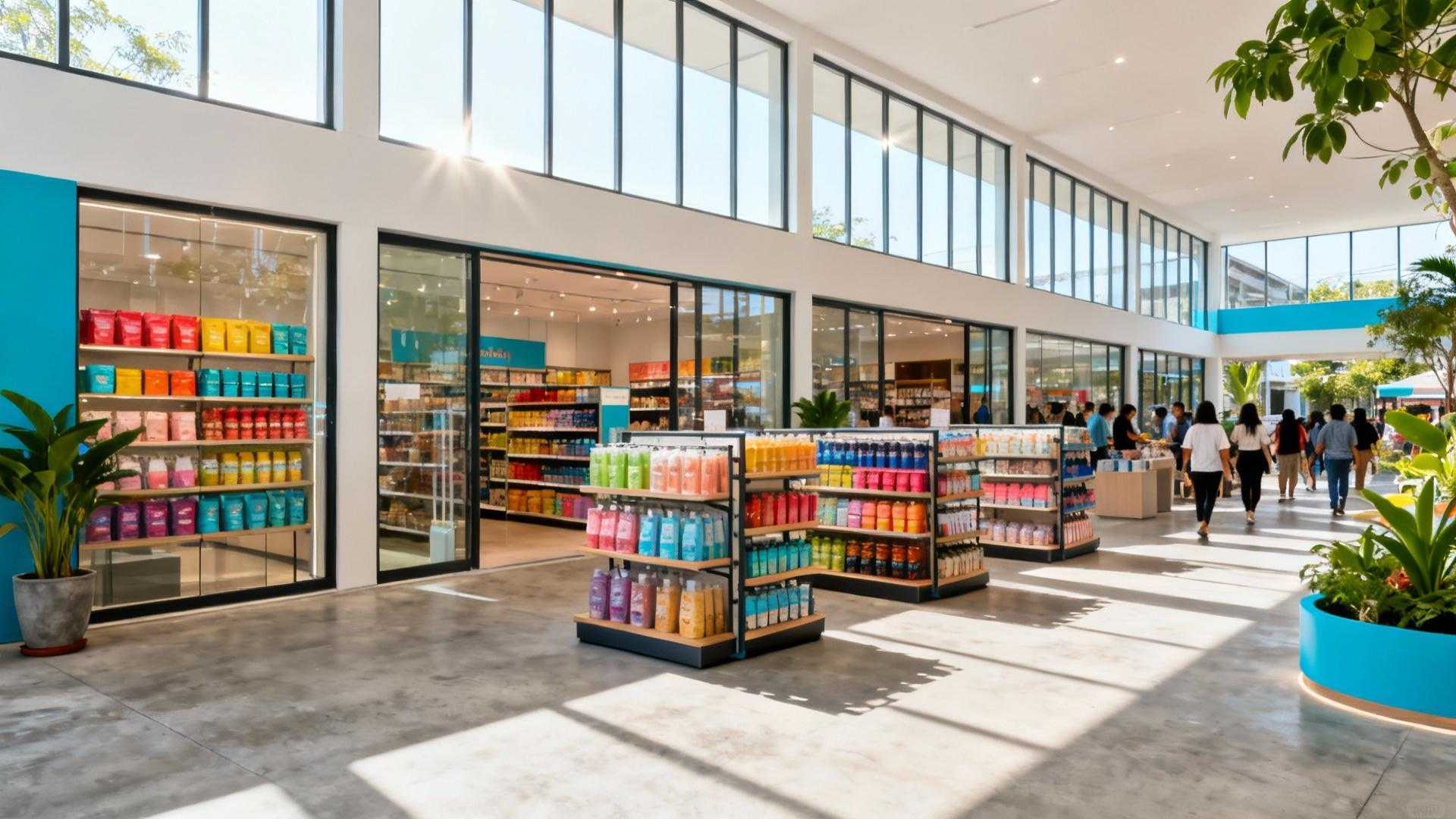I spent two decades exploring Southeast Asia’s limestone labyrinths, and Robinson Lifestyle Thalang delivers something conventional malls never could—authentic Thai shopping at prices that make tourist-trap boutiques look criminally expensive. This two-story sanctuary in northern Phuket costs 70% less than Patong’s resort shops while serving the kind of regional cuisine and local brands that disappeared from tourist zones years ago.
Locals discovered this haven when it opened near the Heroine’s Monument roundabout, transforming northern Phuket’s shopping landscape overnight. The mall operates like Thailand’s best-kept commercial secret: no aggressive vendors, no inflated foreigner pricing, no manufactured “authentic experiences” designed to empty wallets.
The difference hits you the moment you walk past TOPS supermarket’s entrance—prices marked in Thai baht without the tourist tax that magically appears elsewhere.
The food court locals protect from Instagram’s influence
Regional Thai menus tourists never find
Robinson Lifestyle’s second-floor food court operates with the efficiency of Bangkok’s best local eateries. Stalls serve northern larb, southern gaeng som, and Isaan som tam at 80-120 baht per dish—compare that to Patong’s 350-baht pad thai designed for cruise ship crowds. The vendors speak Thai first, English second, and the lunch rush consists entirely of office workers from nearby government buildings.
The 50-baht breakfast that changes everything
Arrive before 9 AM and witness something remarkable: jok (rice porridge) with pork meatballs, century egg, and fresh ginger costs 50 baht. The same breakfast at a Phuket Town hotel charges 280 baht minimum. Locals queue at the corner stall daily, proving authenticity through their consistent presence rather than TripAdvisor ratings.
Shopping advantages tourist malls deliberately hide
Local brand access without markup inflation
The ground floor houses Thai brands like Jaspal, CPS, and CC Double O at domestic prices—no foreign tourist surcharge applied. A cotton dress that costs 1,890 baht here sells for 3,200 baht at Central Festival Phuket’s tourist-facing stores. The price difference funds an extra week exploring starfish-covered Philippine islets or Thailand’s hidden coastal gems.
The supermarket advantage travelers overlook
TOPS supermarket operates with Thalang district pricing rather than resort zone inflation. Fresh mangosteen costs 80 baht per kilogram versus 180 baht at hotel gift shops. Locals fill shopping carts with produce, household items, and imported goods at prices that make budget travel actually sustainable beyond the first three days.
Entertainment value conventional tourist zones abandoned
SF Cinema’s local pricing structure
The second-floor cinema charges 120-180 baht for new releases—standard Thai pricing without tourist inflation. Air-conditioned comfort during Phuket’s humid afternoons becomes affordable rather than prohibitive. Thais fill theaters during weekday matinees, creating the authentic local experience that staged cultural shows merely simulate.
Family zones designed for residents, not resorts
The children’s entertainment area charges 100 baht for supervised play sessions. Compare this to resort kids’ clubs billing 1,500 baht for identical services. Families living in northern Phuket communities depend on this pricing accessibility—the kind of economic reality tourist infrastructure deliberately obscures.
Practical access locals take for granted
The shuttle service resorts don’t advertise
Diamond Resort Phuket and nearby properties run daily shuttle services to Robinson Lifestyle Thalang—free for guests but rarely promoted since resorts profit from captive shopping audiences. The 15-minute ride saves 400 baht in taxi fares while delivering genuine local shopping access.
Location advantages northern Phuket residents understand
Positioned 15 minutes from Phuket International Airport and adjacent to Srisoonthorn Road’s local life, the mall serves Thalang district’s authentic community rather than manufactured tourist zones. This geographic reality creates pricing pressure that favors residents over seasonal visitors—the exact opposite dynamic of Patong’s economic structure.
Why locals guard this shopping sanctuary
Robinson Lifestyle Thalang operates under economic principles that disappear once locations become Instagram-famous. The moment travel influencers flood any Thai venue, prices adjust upward and authenticity dissolves. Locals appreciate this mall precisely because it remains functionally invisible to tourist content creators chasing viral temple alternatives rather than genuine cultural access.
Visit during November through April’s dry season when northern Phuket’s residential character shines clearest. The mall opens daily at 10 AM, but locals know the food court serves breakfast from 7 AM—timing that reveals who understands Thalang district versus who merely photographs it.
Common questions about local shopping in Phuket
How much cheaper is Robinson Lifestyle versus tourist malls?
Expect 60-70% lower prices on food, 30-40% savings on Thai brands, and standard domestic pricing on entertainment. The cost difference compounds rapidly—a family of four saves approximately 2,000 baht daily compared to resort-zone spending.
Do vendors speak English at Robinson Lifestyle Thalang?
Basic English functions in retail stores and the food court, though Thai remains the primary language. This linguistic reality confirms authenticity—venues catering primarily to locals operate in Thai first, tourist languages second.
What makes this mall different from Central Festival Phuket?
Robinson Lifestyle serves northern Phuket’s residential community rather than tourist populations. Central Festival targets visitors with international brands and tourist-adjusted pricing. The functional difference appears immediately in crowd composition and price tags.
